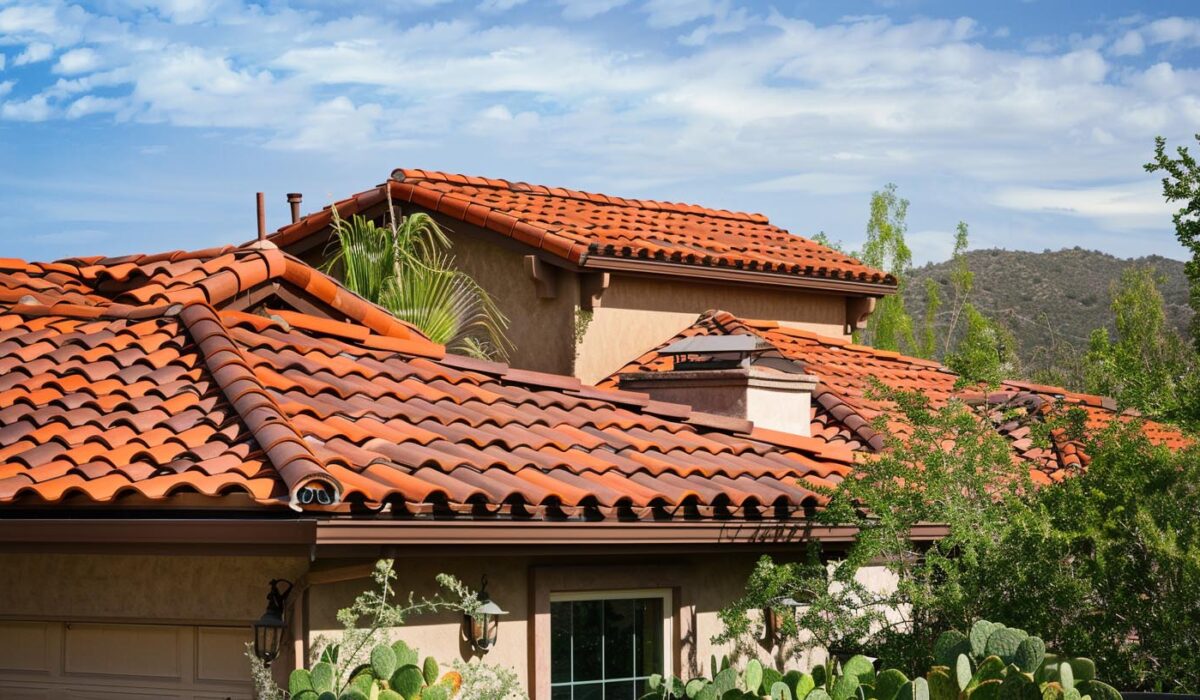Your tile roof is a significant investment in your home’s beauty and protection. But did you know its longevity is closely tied to another, often overlooked, feature? The gutter system plays a critical role in preserving your tile roof for decades. A well-maintained gutter prevents water damage and protects your home’s structure. As a GAF Master Elite Contractor and Owens Corning Preferred Contractor, we at Tile Roofing San Diego understand this relationship. This guide will explain how proper gutter care and regular inspections from a trusted roofing contractor can maximize your tile roof longevity San Diego CA.
The Relationship Between Gutter Systems and Tile Roof Longevity
How do gutter systems affect the lifespan of tile roofs? The primary function of your gutters is to control water flow. They collect rainwater from your roof and channel it safely away from your home, preventing it from pooling or running down your walls.
When this system fails, water can back up under your tiles, leading to water damage, rot, and other serious issues. This connection means the health of your gutter system directly influences your tile roof’s lifespan. Preventing this uncontrolled water flow is essential to avoid costly structural damage.
How Gutters Protect Tile Roofs From Water Damage
Efficiently designed gutter systems play a crucial role in safeguarding tile roofs from water damage, especially under extreme weather conditions. By directing water flow away from the roof edge, they prevent moisture buildup, which can lead to potential issues like mold growth and structural damage. The strategic placement of gutters ensures that heavy rainfall does not compromise the integrity of roofing materials or the home’s foundation. Regular inspections and maintenance of gutters are essential to ensure their functionality and longevity, further enhancing the roof’s lifespan.
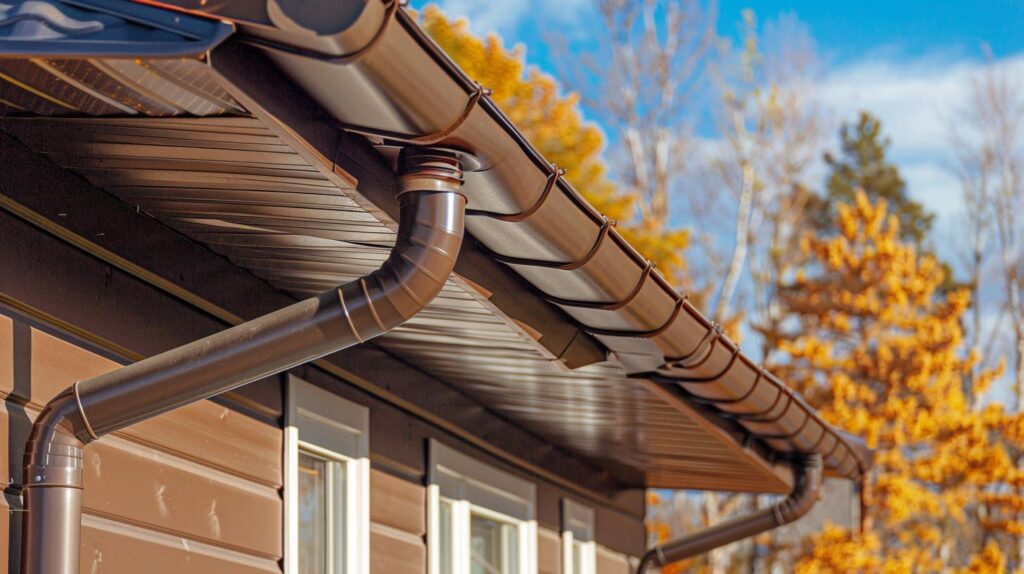
Preventing Erosion and Foundation Problems
Excess water runoff can lead to significant erosion around your property’s periphery, jeopardizing the structural integrity of both your landscape and foundation. A well-functioning gutter system directs water away from your home, mitigating potential issues such as soil displacement and moisture buildup in sensitive areas.
Regular maintenance and inspections ensure that gutters remain clear and operational, preventing water intrusion that could otherwise undermine your home’s foundation. By prioritizing these components, homeowners can enhance the longevity of their tile roofs and safeguard their property against severe weather conditions.
Contact UsUnderstanding Tile Roofs in San Diego
In San Diego, a tile roof is more than just a covering; it’s a statement of style and durability. Made from natural materials, these roofs are perfectly suited to the Southern California climate, offering excellent protection against the sun’s intense rays and adding significant curb appeal.
Their longevity and classic aesthetic make them a popular choice for homeowners. With a variety of roofing materials available, from classic clay to modern concrete, you can find a tile roof that perfectly complements your home’s design while providing lasting protection.
Common Tile Roofing Materials Used Locally
Various materials are commonly used for tile roofs, particularly in regions like San Diego. Clay tiles, known for their durability and aesthetic appeal, are a popular choice due to their ability to withstand extreme weather conditions. Concrete tiles also provide excellent protection against water damage and offer a more affordable alternative. Additionally, some homeowners opt for natural slate, which adds a luxurious touch. Understanding the properties and longevity of these roofing materials ensures proper maintenance and optimal performance throughout the roof’s lifespan.
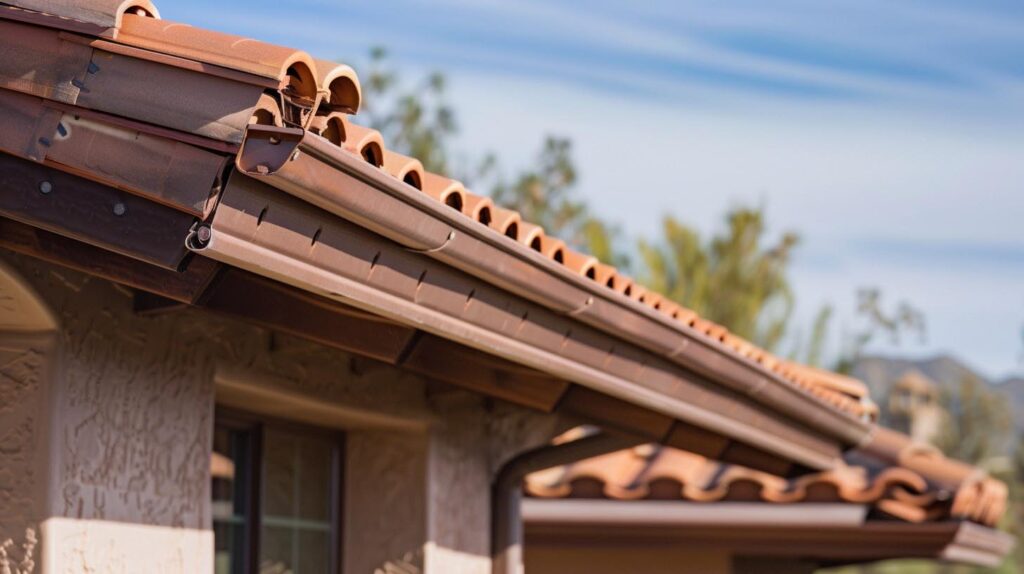
Typical Lifespan of Tile Roofs Under Optimal Conditions
Under optimal conditions, tile roofs can offer impressive longevity, often lasting 50 years or more. Quality materials like clay or concrete tiles resist moisture buildup and weather damage, ensuring a robust roof structure. Regular inspections and proper maintenance further enhance their lifespan, allowing homeowners to mitigate potential issues like water intrusion or damaged tiles. Additionally, the installation process plays a crucial role; proper installation ensures that the roof can withstand heavy rainfall and severe weather, maximizing its overall durability and aesthetic appeal.
Climate Impact on Roofs and Gutters in Southern California
The weather conditions in Southern California present unique challenges for roofing systems. While we enjoy plenty of sunshine, the combination of intense UV rays, occasional heavy rainfall, and coastal salt air can create harsh weather conditions for both roofs and gutters.
These environmental factors can accelerate wear and tear on roofing materials and gutter components. Understanding how extreme weather affects your home is the first step toward implementing a maintenance plan that ensures long-term protection and durability. The following sections will explore these climate impacts in more detail.
The Effects of Coastal Weather on Roofing Systems
Coastal weather can significantly impact roofing systems, particularly tile roofs, due to its unique environmental challenges. Saltwater exposure, high humidity, and heavy winds accelerate deterioration, leading to potential issues such as moisture buildup and mold growth. Regular inspections are essential to identify early signs of damage and mitigate erosion risks. Utilizing quality materials designed to withstand these severe conditions not only ensures the roof’s longevity but also preserves the aesthetic appeal of the home, safeguarding its structural integrity over time.
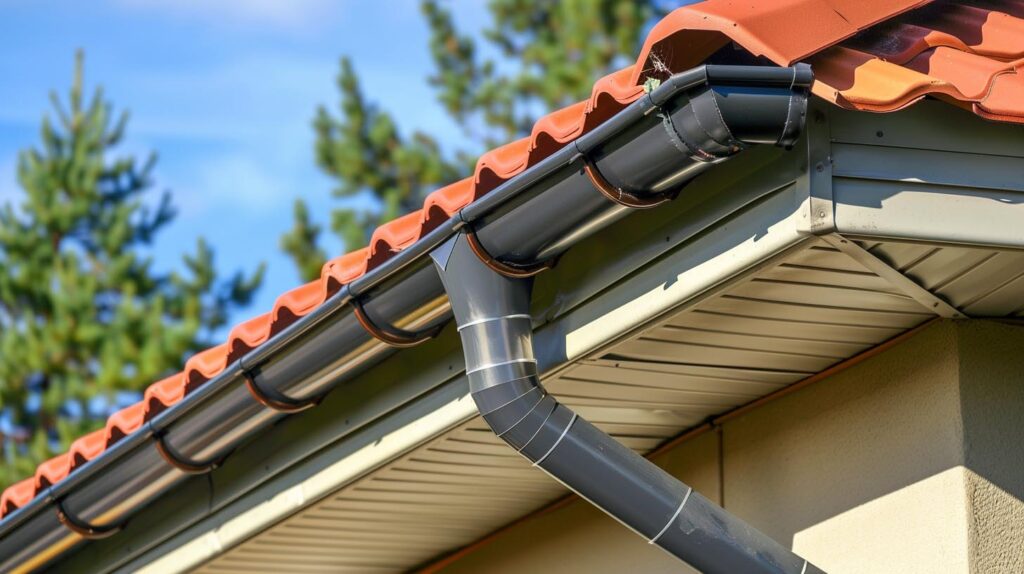
Why Humidity and Salt Air Matter for Tile Roofs and Gutters
High humidity and salt air significantly influence the longevity of tile roofs and their accompanying gutter systems. These environmental factors can accelerate wear on roofing materials, leading to issues such as moisture buildup and accelerated decay. Salt air can corrosively impact metal gutters, increasing the need for frequent inspections. Regular maintenance, alongside quality materials, becomes crucial for preserving both aesthetics and structural integrity. Moreover, addressing these unique coastal conditions proactively helps mitigate damage, ensuring the roof remains functional and visually appealing for years to come.
Types of Gutter Systems Ideal for Tile Roofs
Choosing the right gutter system for your tile roof is just as important as selecting the roof itself. The best roofing options are those that can handle significant water flow from the tile surfaces and withstand local weather conditions. Your choice should be based on durability, style, and maintenance needs.
When considering a new roof installation or gutter replacement, it’s essential to look at quality materials and different system types, such as seamless versus sectional. These choices will determine how well your gutters protect your home for years to come.
Seamless vs. Sectional Gutters: Pros and Cons
Choosing between seamless and sectional gutters involves weighing their distinct advantages and disadvantages. Seamless gutters, crafted from a single piece of material, minimize joints where leaks can occur, effectively reducing water intrusion and potential water damage. Their aesthetic appeal is often greater, enhancing the roof’s curb appeal. Conversely, sectional gutters, while generally more affordable and easier to replace, can present challenges in maintaining proper water flow and may require frequent inspections for signs of damage. Selecting the right system is critical for long-term tile roof health.
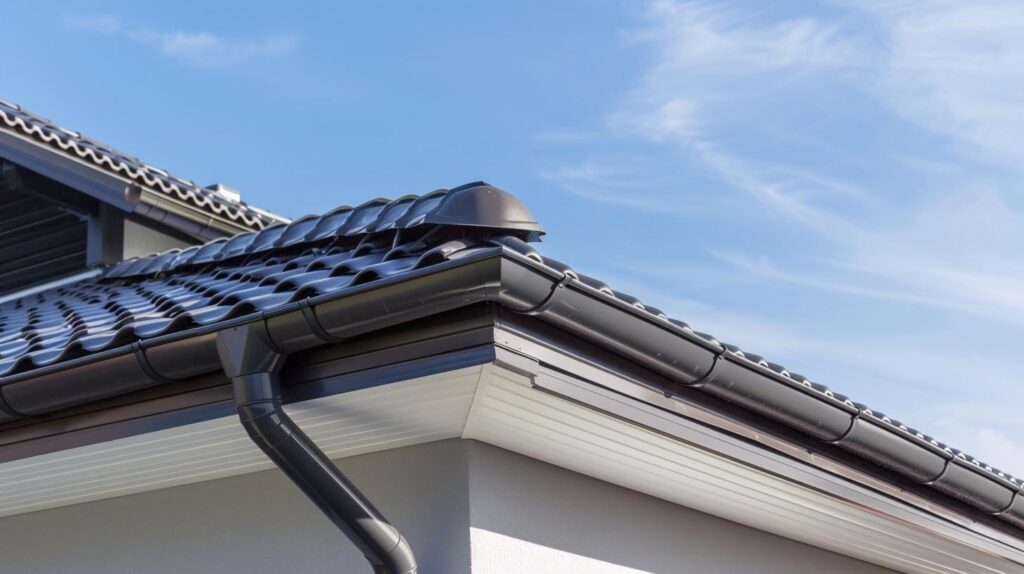
Material Choices: Aluminum, Copper, and Vinyl
Selecting the right materials for gutter systems significantly impacts the longevity and effectiveness of tile roofs. Aluminum gutters are lightweight and resistant to rust, making them a popular choice for areas experiencing heavy rainfall. Copper gutters add aesthetic appeal and durability but require proper maintenance to prevent corrosion. Vinyl gutters offer a cost-effective solution with excellent resistance to moisture buildup but may lack the longevity of metal options. Each material choice, depending on the installation process and local weather conditions, contributes to ensuring water flows away effectively, safeguarding the roof’s lifespan.
The Importance of Proper Gutter Installation
Even the highest-quality gutter system will fail if not installed correctly. Proper gutter installation is a precise process that ensures water flows correctly toward the downspouts without pooling or overflowing. This requires careful measurement of the roofline and setting the correct slope.
A professional roofing contractor understands how to securely attach gutters to the roof structure without damaging the fascia or the roof edge. Poor installation can lead to immediate problems and costly damage, making professional expertise a crucial part of protecting your home.
Risks of Poor Installation on Tile Roof Longevity
Inadequate gutter installation can lead to severe consequences for tile roof longevity, compromising the roof’s structural integrity. Improperly installed gutters can create moisture buildup, prompting water intrusion that affects not only the roof but also your home’s foundation. Potential issues, such as damaged tiles and mold growth, often arise from these installation faults. Regular inspections are crucial to identify any weaknesses in the gutter system, ensuring that roofing materials remain in good condition over time and ultimately extending the roof’s lifespan.
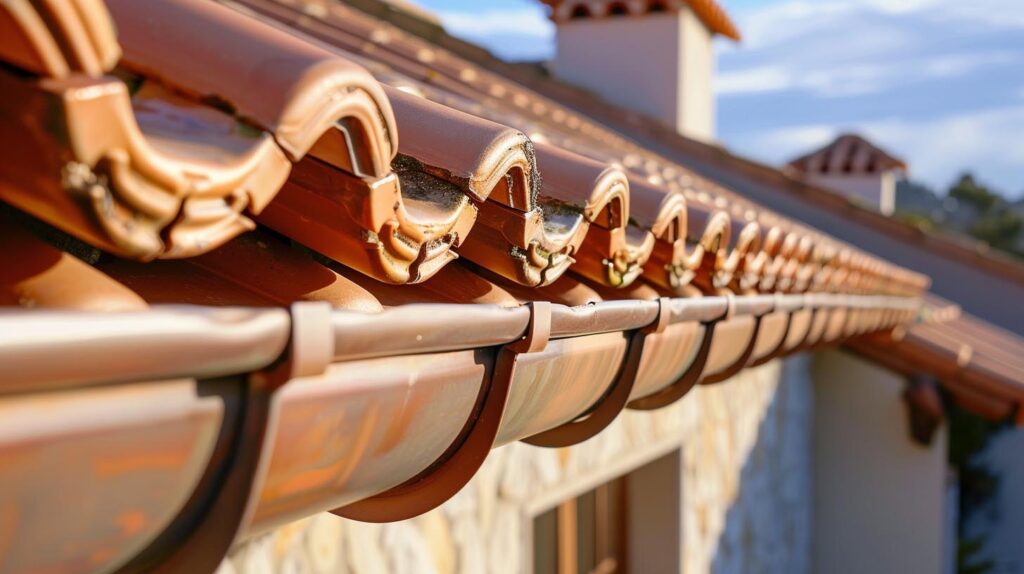
What to Expect During Professional Gutter Installation
Professional gutter installation is a critical process that begins with a thorough roof inspection. This ensures that the existing roofing materials, including tile, are in good condition and free from potential issues. The installation team will assess structural integrity and design a system tailored to your home’s foundation and roof edge.
During the process, quality materials such as aluminum or copper gutters are selected for durability. Regular maintenance is emphasized to prevent moisture buildup, thereby enhancing the roof’s lifespan and protecting against severe weather damage.
Call Us 619-350-1086What’s Next
To ensure the durability and aesthetic appeal of tile roofs, effective gutter systems are indispensable. Understanding their critical role in mitigating water damage, preventing erosion, and safeguarding the home’s foundation can extend the roof’s lifespan significantly. Regular inspections and proper maintenance of gutters can thwart potential issues caused by severe weather, such as heavy rainfall. Investing in quality materials and professional gutter installation can lead to long-term benefits, enhancing the overall roof structure and providing peace of mind against moisture buildup and roofing problems.
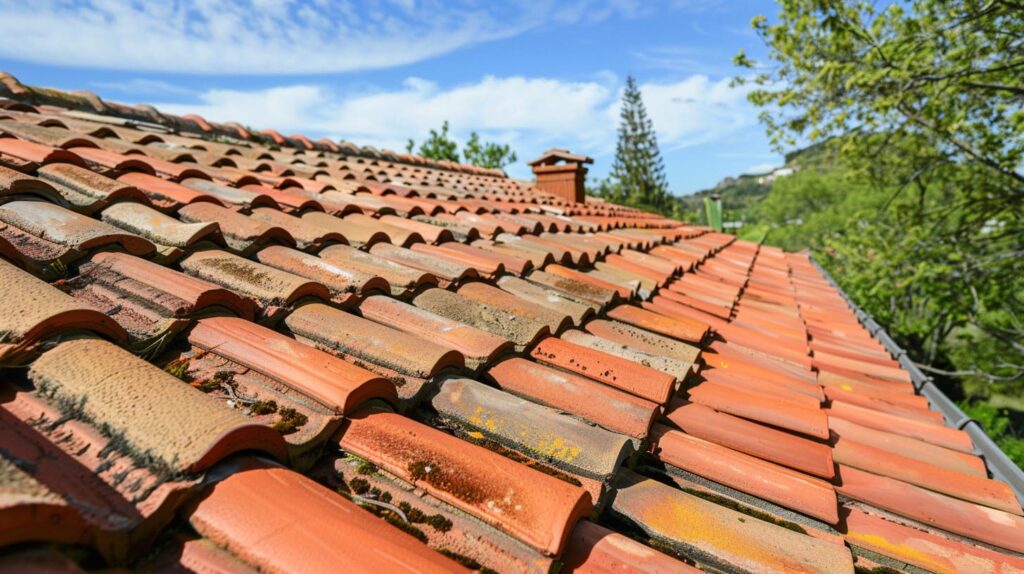
Frequently Asked Questions
What is the life expectancy of a tile roof?
A tile roof’s lifespan is impressive, often lasting 50 to 100 years, depending on the roofing materials used. Longevity relies on professional installation, a sound underlayment, and regular maintenance, including periodic roof inspections to replace any cracked or damaged tiles and ensure the system remains in good condition.
What is the best roof for longevity?
The best roof for longevity includes materials like clay tiles, slate, or metal, each offering durability and resistance to environmental factors. Proper installation, maintenance, and the synergy of an effective gutter system also play crucial roles in maximizing a roof’s lifespan.
Read our blog: Tile Roof Color Trends for San Diego Homes

